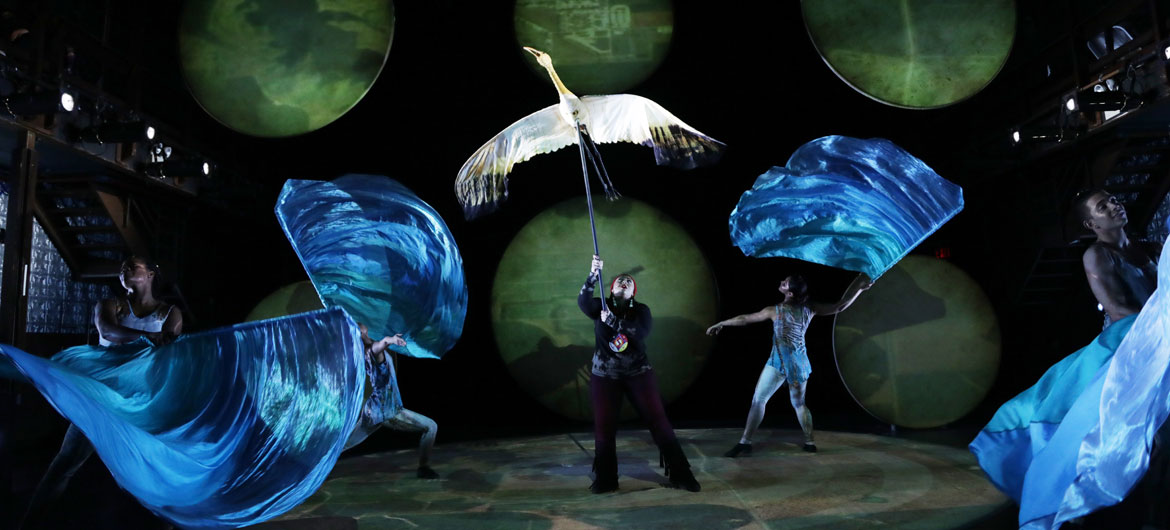“Ajijaak on Turtle Island”—by Heather Henson (daughter of Muppets creator Jim Henson) and IBEX Puppetry—is an environmental fable, Henson says, about “how to survive and thrive into the future.”
The giant puppet spectacle being performed tonight at Providence’s Moses Brown School “is about a whooping crane on its first migration,” Henson says. But Ajijaak—an Ojibwe word for sandhill crane—gets separated from her parents when they flee a fire and is left to make her first migration south and back alone. It’s a tale of a lost child on a great adventure, trying to find her parents, meeting animals and Native people along the way. “These are Indigenous people that are still alive today and tell their stories,” says Ty Defoe, a Grammy Award winner who co-directed the show with Henson, and has Oneida and Ojibwe roots himself.
“I think the mainstream world, mainstream thinking is really out of balance. … There is a lot of turning to Indigenous knowledge for leadership,” Henson says. “I’ve been doing environmental theater for a lot of time and I’ve been wanting to give platforms to our Native voices on these topics.”
“Ajijaak on Turtle Island” was written by Defoe, with lyrics by Defoe and Dawn Avery, music by Defoe, Avery, Larry Mitchell and Kevin Tarrant, and based on original storyboards by Henson. It’s presented by Providence’s FirstWorks, which is celebrating its 15th year of productions. Henson and company’s visit has included film screenings, puppetry workshops at Rhode Island schools, and matinee performances for students. FirstWorks Executive Artistic Director Kathleen Pletcher says the Rhode Island nonprofit aims “to use world-class art to build our community, going out and connecting people with living art, to get together to think and discuss.”
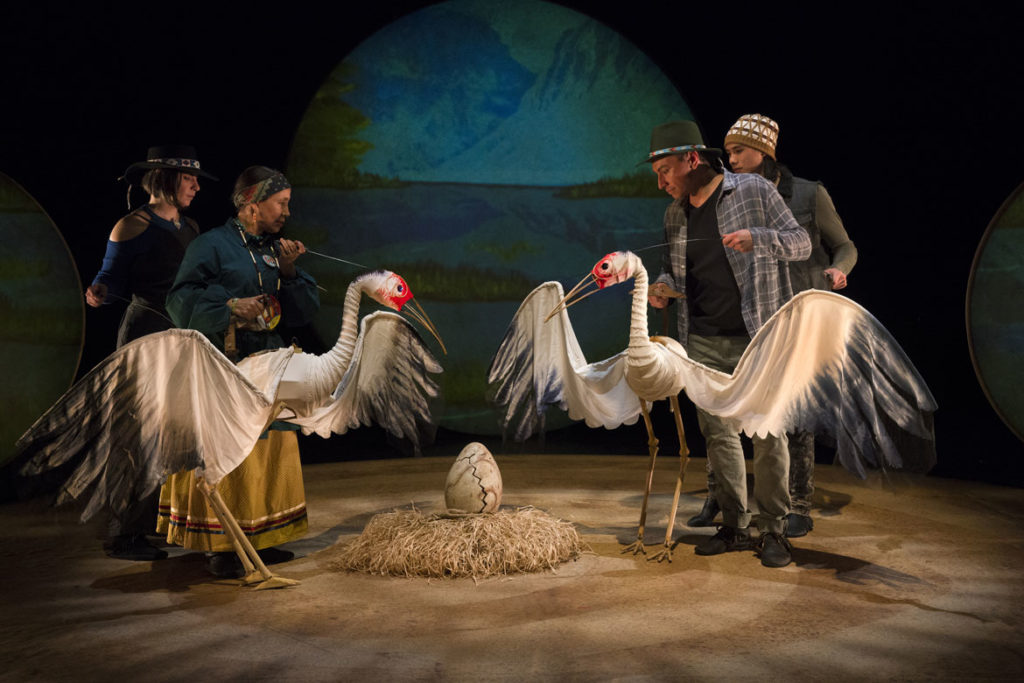
“Ajijaak” is a magical spectacle of rod-puppet cranes and coyotes, birch branches that transform into a bounding deer, butterflies and birds that come alive as kites soaring at the ends of long sticks, bison performed by puppeteers in grassy masks and costumes. The puppeteers are always exposed—standing beside the puppets, which were designed and fabricated by Jim Henson’s Creature Shop. Projections appear on six disks that hang like moons over the stage. There’s live drumming and singing as well as recorded music and sound effects. The show’s movement and dancing draws on Indigenous pow wow dances.( “These dances are social dances, so they’re acceptable to be seen in public,” Defoe says. “We don’t do ceremonial dancers.”)
The “very diverse, multitribal, multination cast” (in Defoe’s words) includes Joan Henry, Tony Enos, Wen Jeng, Adelk Polak, Sheldon Raymore, John Scott-Richardson and Henu Josephine Tarrant. They have affiliations with the Rappahanock, Ho-Chunk, Kuna, Hopi, Echota Cherokee, Cheyenne River Sioux, Haliwa-Saponi and Tsalag / ‘Nde / Arawaka. “We really are working to give voice to Indigenous thinking and voices in the forefront of this show,” Henson says.
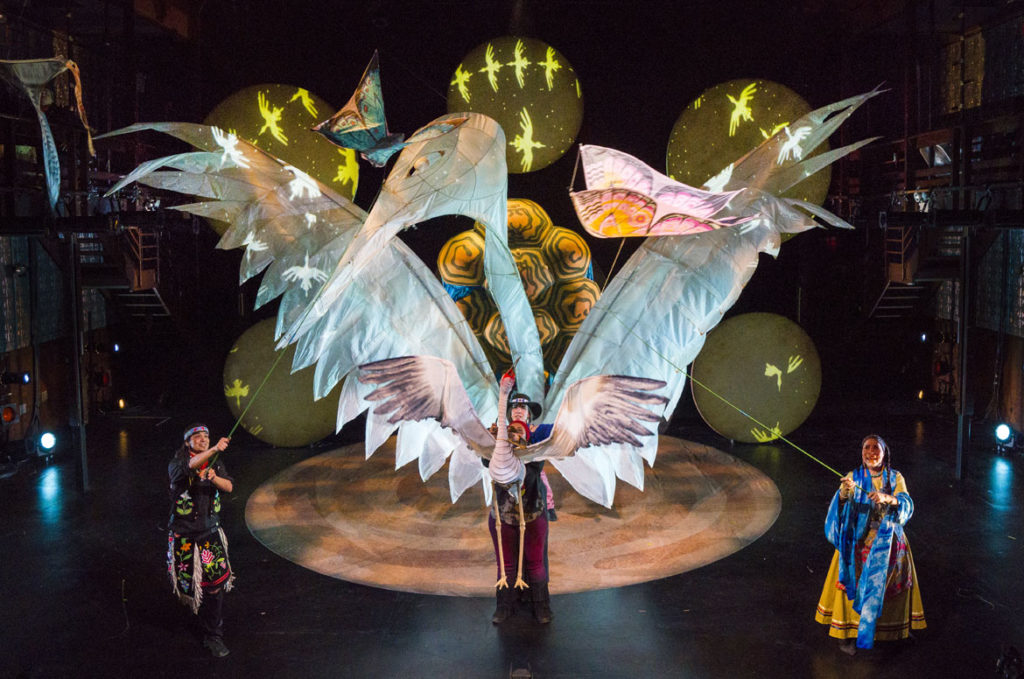
In 1995, just after graduating from Providence’s Rhode Island School of Design, Henson says, “I was first going to do shows that helped the audience contemplate their relationship to nature.” She created shows about the reintroduction of wolves to Yellowstone, about zoo animals, about cranes: “Crane: On Earth, In Sky,” “Flight: A Crane’s Story,” “Panther and Crane.”
Cranes “need the natural systems the way they were intended to be. They need water systems to be free. They need grasses to grow wild,” Henson says. “…They are all over the planet. No matter where you go they are highly respected.”
Henson says, “I wanted to know what our relationship to cranes is in our country.” She found that cranes’ migration from what’s now northern Canada to Mexico has been reduced as the Great Plains have been altered.
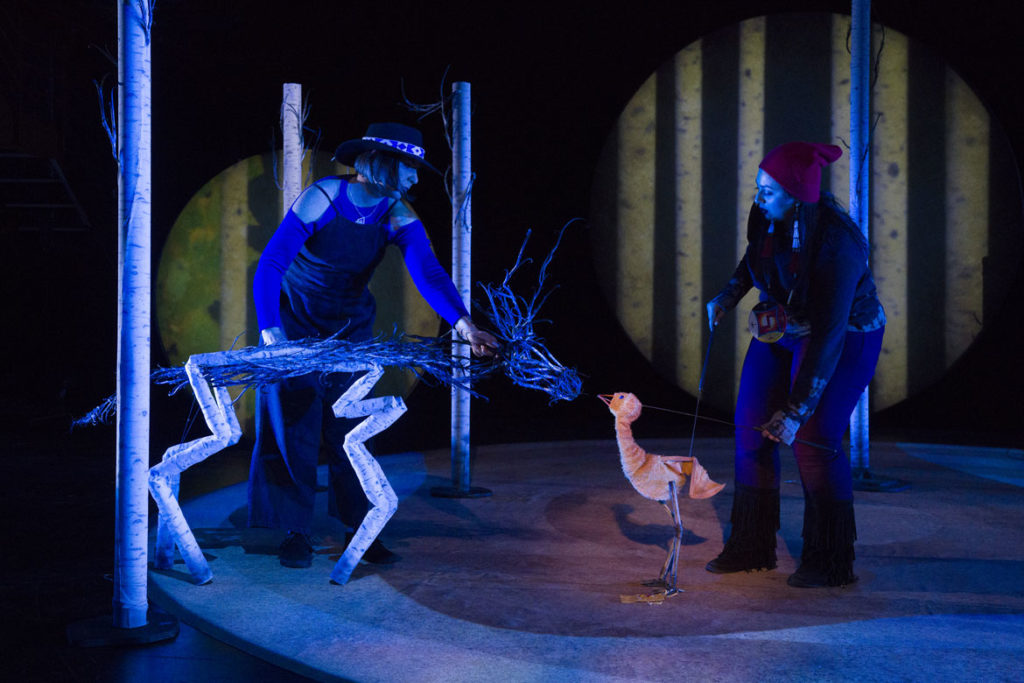
“There is something really special about cranes,” Defoe says. “The crane in many Indigenous nations is considered the voice of the people. It gives voice.”
And, of course, the theme of migration has a charged political resonance with the United States’ current anti-immigration presidential administration.
“Everything moves and flows with this moving vibrant earth,” Henson says. “The borders are a concept of this particular political culture that we are in now. These particular borders that we’ve put up are not good for ecosystems. They’re not good for people. They’re not good for animals.”

“Grandchildren, we must keep the environment safe,” a grandmother character says at the start of “Ajijaak.” As the crane makes her way into a birch forest, across the Great Plains, into a field of corn and sunflowers, the grandmother warns of a serpent—a giant skull-headed dragon-like puppet—that awakes when “upset with humans taking and taking and taking and not giving back to Mother Earth.” She tells Ajijaak that it’s her mission to get the snake back to sleep.
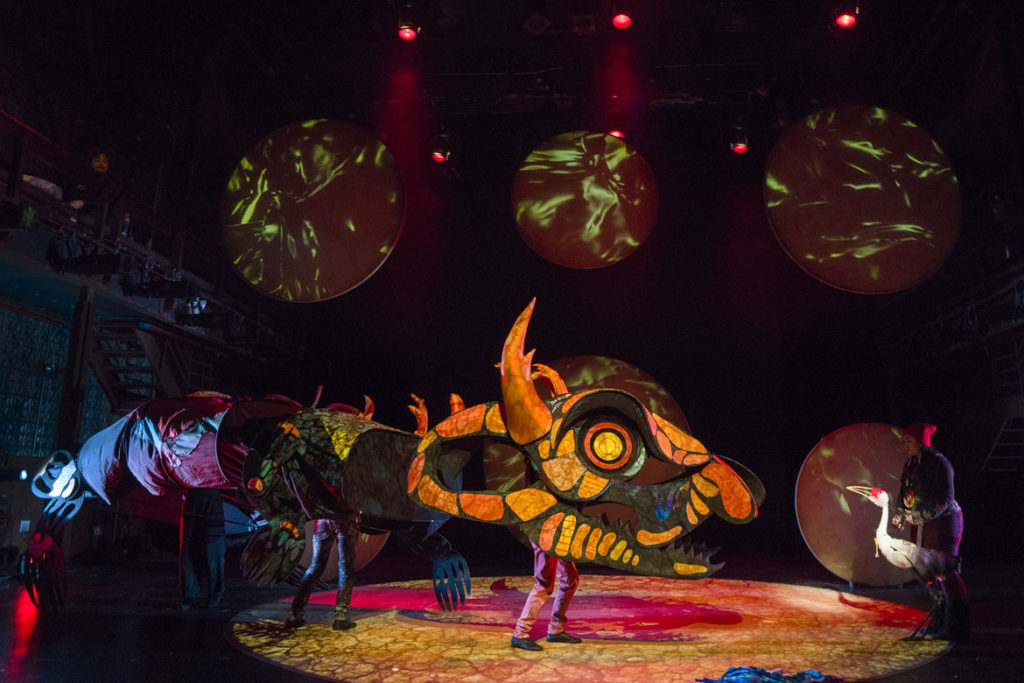
An Indigenous man wearing a horned headdress diagnoses the problem: “Some of us two-legged beings do not think of Mother Earth as living.” A cocky coyote (“I’m cool, I’m so cool”) tricks Ajijaak into going into a city loud with jackhammers to see the construction cranes. The bird meets dancing crabs and a rapping turtle.
“Every time I make this migration it’s a flight of freedom,” Ajijaak says. “We are survivors. … It takes all living beings to map out a new way of making peace.”
The grandmother says, “We two-legged have to work together to mend the pieces of Turtle Island.”
If this is the kind of coverage of arts, cultures and activisms you appreciate, please support Wonderland by contributing to Wonderland on Patreon. And sign up for our free, weekly newsletter so that you don’t miss any of our reporting.

